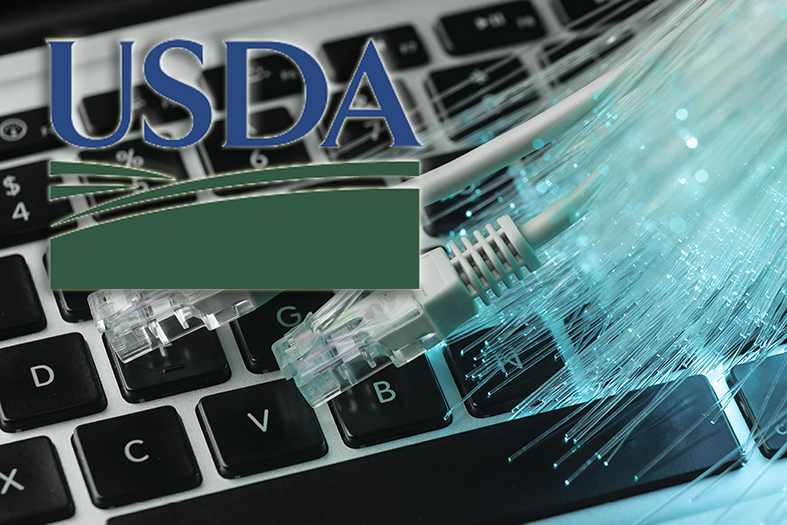
Agriculture Secretary Tom Vilsack announced yesterday that the United States Department of Agriculture (USDA) is investing $167 million in 12 states, including Georgia, to deploy broadband infrastructure in rural areas without sufficient access to high-speed internet.
08.11.2021reconnectnewsreleasechart usda broadband investment 12 states“Generations ago, the federal government recognized that without affordable access to electricity, Americans couldn’t fully participate in modern society and the modern economy. Broadband internet is the new electricity. It is necessary for Americans to do their jobs, to participate equally in school learning and health care, and to stay connected,” Secretary Vilsack said. “This is why President Biden’s American Jobs Plan prioritizes building ‘future-proof’ broadband infrastructure – like the investments we’re announcing today – in areas without sufficient access to broadband, so that we finally reach 100 percent high-speed broadband coverage.”
According to the USDA, these investments will benefit rural people in Alaska, Arizona, Colorado, Georgia, Missouri, North Dakota, Oklahoma, South Carolina, Tennessee, Texas, Utah and Virginia.
USDA’S examples as part of the announcement:
- Gila Local Exchange Carrier, Inc., which does business as Alluvion Communications, headquartered in Chandler, Ariz., will use a $14.8 million grant to deploy a fiber-to-the-premises network in rural Arizona. The funded service area includes 5,547 households, 22,645 people, 142 businesses, a school, a health care facility and six farms spread over 59 square miles.
- Central Virginia Services Inc., headquartered in Arrington, Va., will use a $14.1 million grant to deploy a fiber-to-the-premises network in rural Virginia. The funded service area includes 37 educational facilities, three health care facilities, 14 essential community facilities, 4,139 households, 13,886 people, 193 businesses and 65 farms spread over 65 square miles.
- Altamaha Electric Membership Corporation, headquartered in Lyons, Ga., will use a $10.6 million loan and a $10.6 million grant to deploy a fiber-to-the-premises network in rural Georgia. The funded service area includes 6,665 households, 18,789 people, 25 educational facilities, 17 essential community facilities, 10 health care facilities, 573 businesses and 207 farms spread over 246 square miles.
The investments being announced today are part of the $550 million Congress allocated to the second round of the ReConnect Program(See pdf below) as well as other funds made available for the program since 2018. USDA expects to begin inviting applications for a third round of program funds in the coming weeks.
Broadband ReConnect Program FY 2020 FOA Awards Report usda 08112021Background:
USDA’s ReConnect Program provides loans and grants to construct, improve or acquire facilities and equipment needed to provide broadband service in eligible rural areas. To learn more about ReConnect Program eligibility, technical assistance and recent announcements, visit www.usda.gov/reconnect.
Under the Biden-Harris Administration, Rural Development provides loans and grants to help expand economic opportunities, create jobs and improve the quality of life for millions of Americans in rural areas. This assistance supports infrastructure improvements; business development; housing; community facilities such as schools, public safety and health care; and high-speed internet access in rural, Tribal and high-poverty areas. For more information, visit www.rd.usda.gov. If you’d like to subscribe to USDA Rural Development updates, visit our GovDelivery subscriber page.
USDA touches the lives of all Americans each day in so many positive ways. In the Biden-Harris Administration, USDA is transforming America’s food system with a greater focus on more resilient local and regional food production, fairer markets for all producers, ensuring access to safe, healthy and nutritious food in all communities, building new markets and streams of income for farmers and producers using climate smart food and forestry practices, making historic investments in infrastructure and clean energy capabilities in rural America, and committing to equity across the Department by removing systemic barriers and building a workforce more representative of America. To learn more, visit www.usda.gov.


Bulloch Public Safety
Several Arrested in Bulloch for Narcotics Trafficking After Citizen Complaints

Bulloch Public Safety
12/19/2025 Booking Report for Bulloch County

Chattooga Local News
Trump signs executive order reclassifing marijuana

Bulloch Public Safety
12/18/2025 Booking Report for Bulloch County

Bulloch Public Safety
11/24/2025 Booking Report for Bulloch County

Bulloch Public Safety
12/12/2025 Booking Report for Bulloch County

Bulloch Public Safety
12/01/2025 Booking Report for Bulloch County

Bulloch Public Safety
12/16/2025 Booking Report for Bulloch County

Bulloch Public Safety
12/11/2025 Booking Report for Bulloch County





